Kauai’s premier hiking trail follows the island’s famed Na Pali Coast for eleven epic miles. At the end of the trail is remote Kalalau Beach, an almost Eden-like place cherished by hikers, hippies, and free spirits.
Area: Na Pali Coast / North Shore
Trail Length: 11 miles
Difficulty: Difficult
The Kalalau trail is an incredibly beautiful but potentially dangerous trail on Kauai’s Na Pali Coast. The 11-mile trail leads from Ke’e Beach to Kalalau Beach.
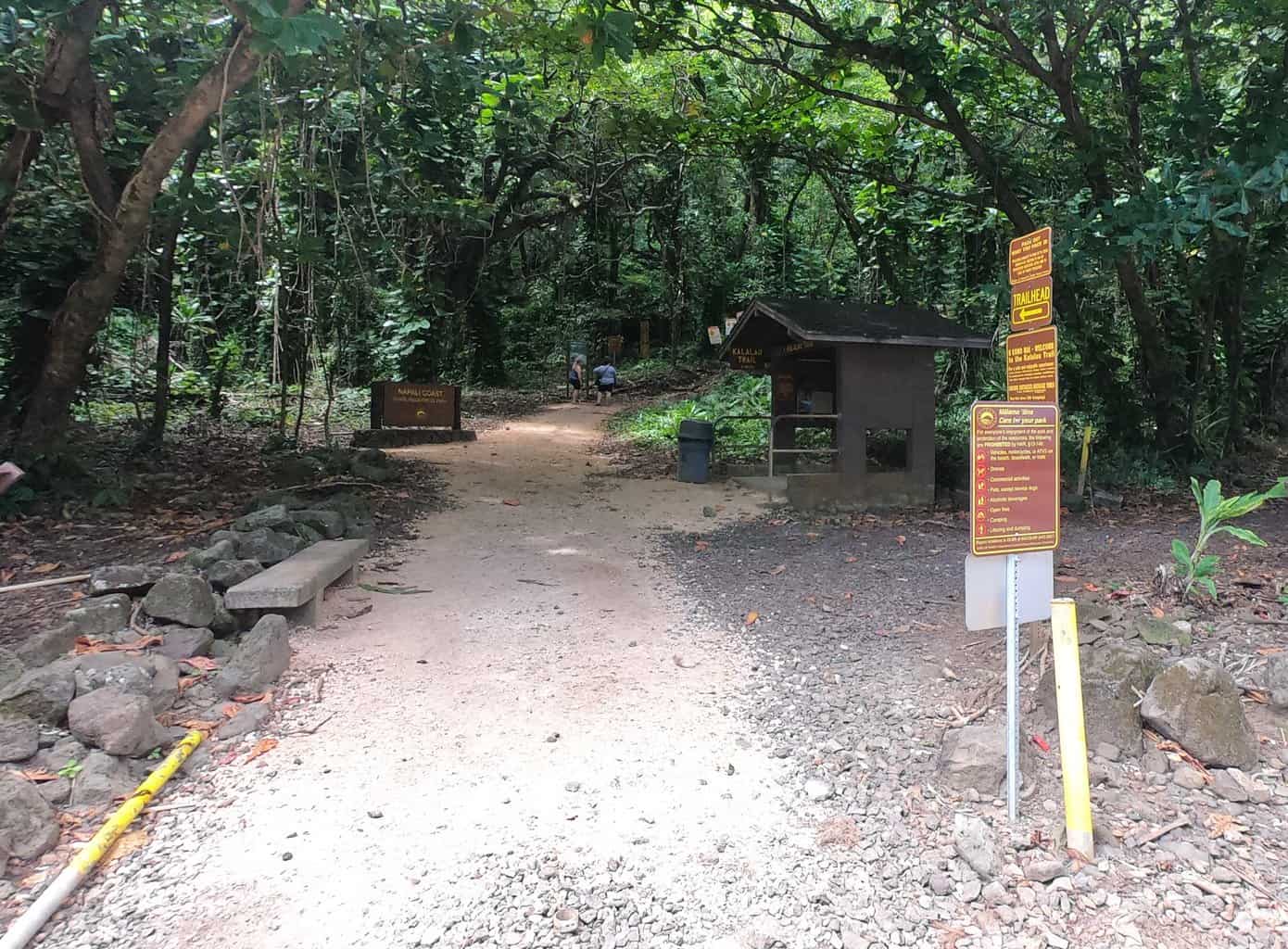
The first two miles, also known as the Hanakapiai Trail, are moderately easy. This section is the most hiked portion of the trail, leading to beautiful Hanakapiai Beach.
There is a stream at the beach that must be crossed to continue on your journey. Normally, the stream can be crossed with relative ease. However, during and after heavy rains, the stream can become swollen and impassable, sometimes prompting closure of the entire trail.
Do not attempt to cross the stream (from either direction) if the stream is swollen. Wait for the stream to subside before crossing. Hiking beyond Hanakapiai Beach requires a Kalalau Trail permit, and backpacking and hiking experience are recommended beyond this point. Click here for more information about permits.
After Hanakapiai Beach, the trail rises dramatically to the highest point on the trail, a place known as Space Rock.
The trail crosses several lush valleys after Space Rock, before arriving at Hanakoa Stream at six miles. There is a campground here, and many hikers will camp here for the night before completing their journey to Kalalau Beach the next day.
The campground is inland, away from the coastline and is not a favorite for some hikers. If there’s time in the day, and energy left in the tank, hike on to beach in one day if you can. There’s also a side-trail here that leads to Hanakoa Falls if you have the time.
The infamous Crawler’s Ledge is next. The trail becomes very narrow at 7 miles with severe drop offs that would most likely be fatal. This is the section of the trail that causes the most concern, especially from those with a fear of heights. Extreme caution is urged along this part.
There are many videos that attempt to show the reality of Crawler’s Ledge. Some angles look truly precipitous while other videos show hikers carefully making their way along the trail. The consensus is the trail is a little bit wider than what it looks like in the videos. However, the rocky drop-off is without question. Only experienced, sure-footed hikers should attempt this part of the trail.
It will be somewhat easier under drier conditions. Under wet and rainy conditions this section can be truly treacherous and dangerous.
Once past Crawler’s Ledge there is still one more hurdle to overcome. A section of loose red dirt on the trail creates a situation that can send a person sliding over the edge. Hiking poles are strongly recommended for the entire hiking trail, but especially for this section.
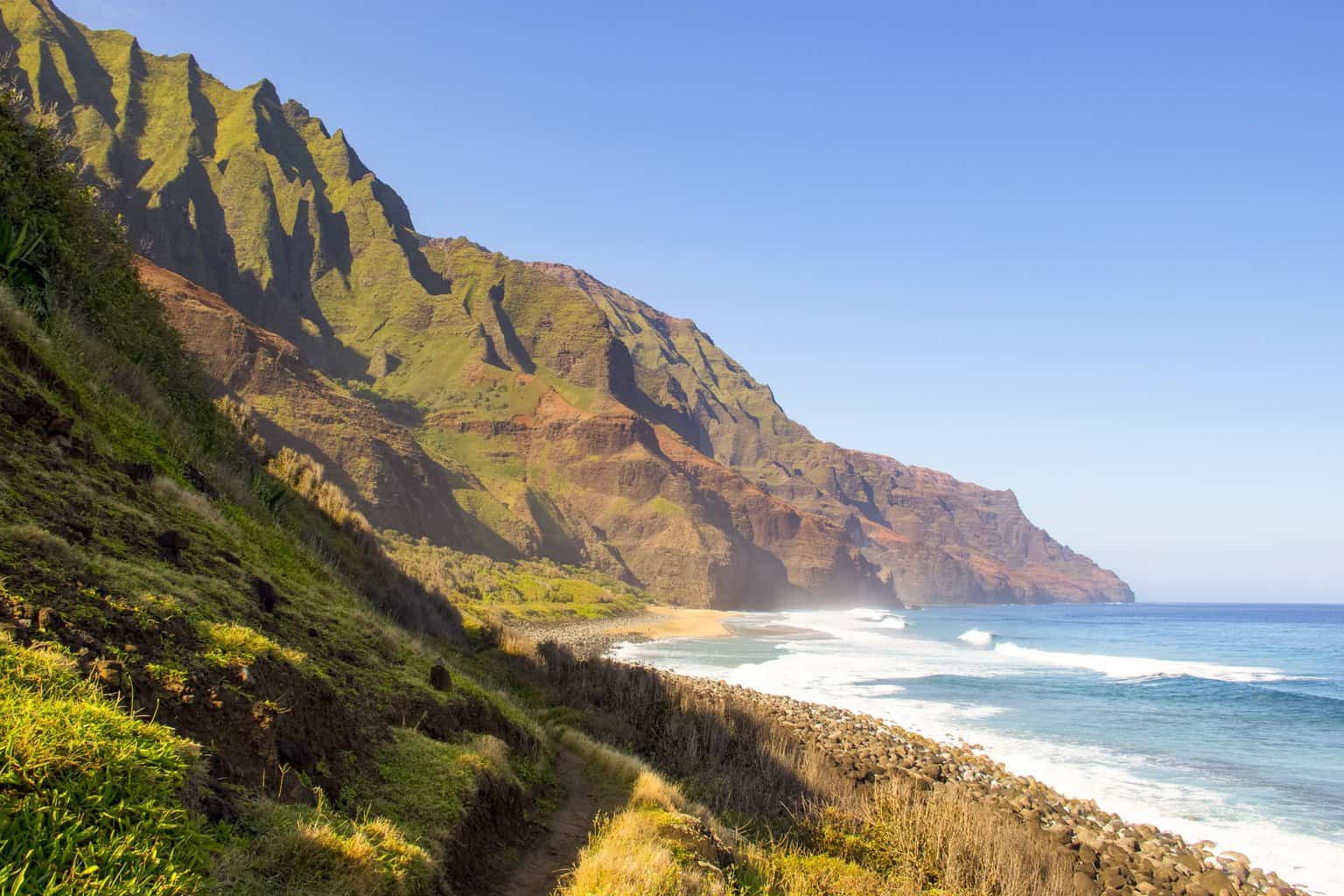
The remaining part of the trail is a breeze. It ends at remote Kalalau Beach, a worthy payoff for a strenuous hike. By this point, you will have earned your cred and are now free to partake in the utopia that is Kalalau Beach.
If you’ve made it this far, you will have hiked and survived one of the most beautiful hiking trails in Kauai and the world. You will also have hiked and survived one of the most dangerous.
Though “Crawler’s Ledge” is a precarious section, the biggest dangers lie at the beaches and streams where dozens of people have drowned. Falling rocks, hikes along the cliffs and in the waterfalls are also a constant danger.
What To Bring On The Hike
- Plenty of water and method to purify water
- Sunscreen
- Backpack and camping accessories
- Food
- Trail shoes
- Hiking Poles
Permits Required For Kalalau Trail
Permits are issued by the State of Hawaii – Department of Land and Natural Resources. Permits for camping along the Kalalau Trail are issued for Kalalau (beach) only.
However, permits for Kalalau are also valid for camping at Hanakoa, located a little beyond the halfway point of the trail, approximately 6 miles from the trailhead at Ke’e Beach. Hanakoa and Kalalau, which contain facilities to support camping activities, are the only two authorized areas for camping along the entire trail.
Complete information about camping permits can be found on the State of Hawaii Camping Website.
Is The Kalalau Trail Dangerous?
Dangers along the trail include the following:
- Dehydration
- Falling Rocks
- Flash Floods (swollen streams, especially at Hankapiai Beach, can wash you out to sea)
- Dangerous Cliffs (rains can make “Crawler’s Ledge” even more slippery and dangerous)
A good place to learn more about “Crawlers Ledge” is at YouTube.com which has a number of videos about this section of the trail. No campfires are allowed so cook on backpacking/camping stoves only.
You should boil or treat water since all streams contain the bacteria leptospirosis. And don’t forget to pack out what you packed in.
Though the vast majority of people on the Kalalau Trail are helpful and generous, there have been some instances of wrongdoing. A couple years ago, an Oregon man threw a Japanese tourist from a cliff, almost killing her. The incident resulted in a four-day closure of the trail and a four-month manhunt.
Another incident that occurred years back was when a 39-year-old woman from the Netherlands identified as Ramona van Schendel fell to her death from the Kalalau Trail. Her body was reported in the water on the Na Pali Coast on January 18th by people on jet skis. The people on the jet skis took her lifeless body to Ke’e Beach where lifeguards performed CPR.
Police believe she was already dead on arrival. A search of the trail by authorities found where Schendel likely lost her footing and fell down a cliff into the waters below. The location of the fall is near Space Rock, about three miles from the trailhead at Ke’e Beach. The Space Rock area is the highest point along the entire Kalalau Trail and a fall from that area would mean almost certain death.
Kalalau Trail Photos
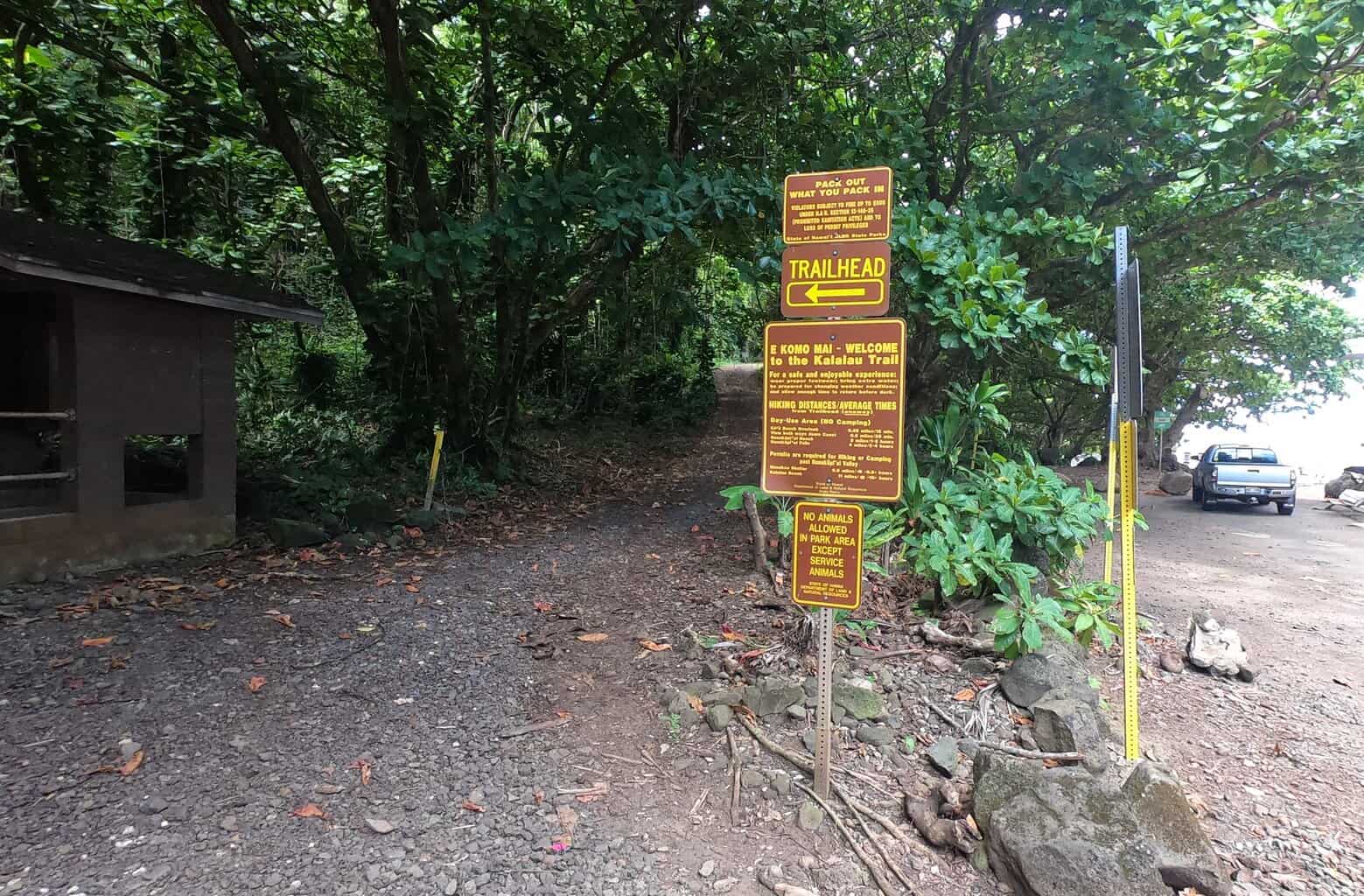
The Kalalau Trail trailhead at Ke’e Beach.
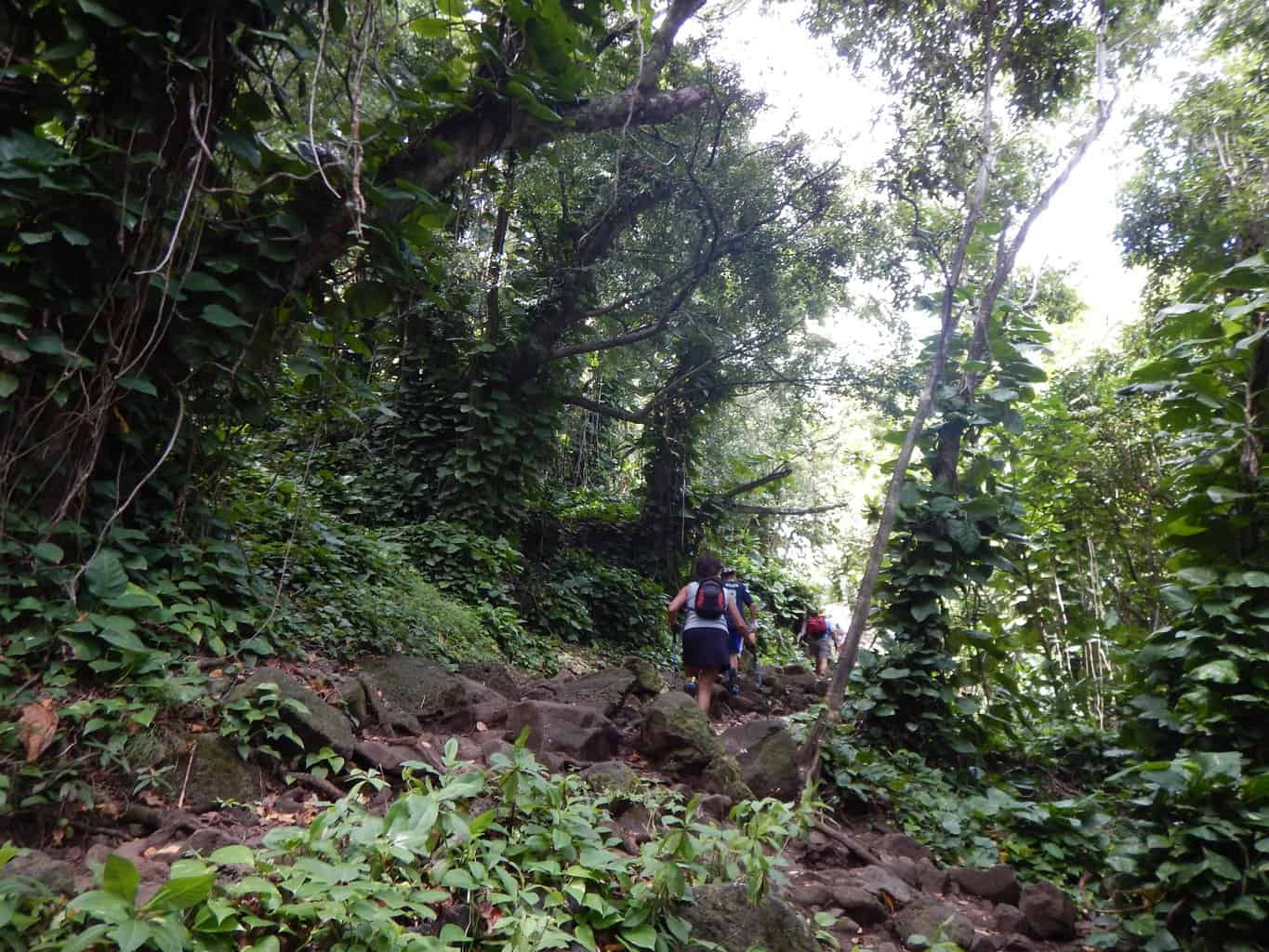
The first part of the trail rises quickly on slippery rocks. There are views of Ke’e Beach (below) about 10-15 minutes into the hike.
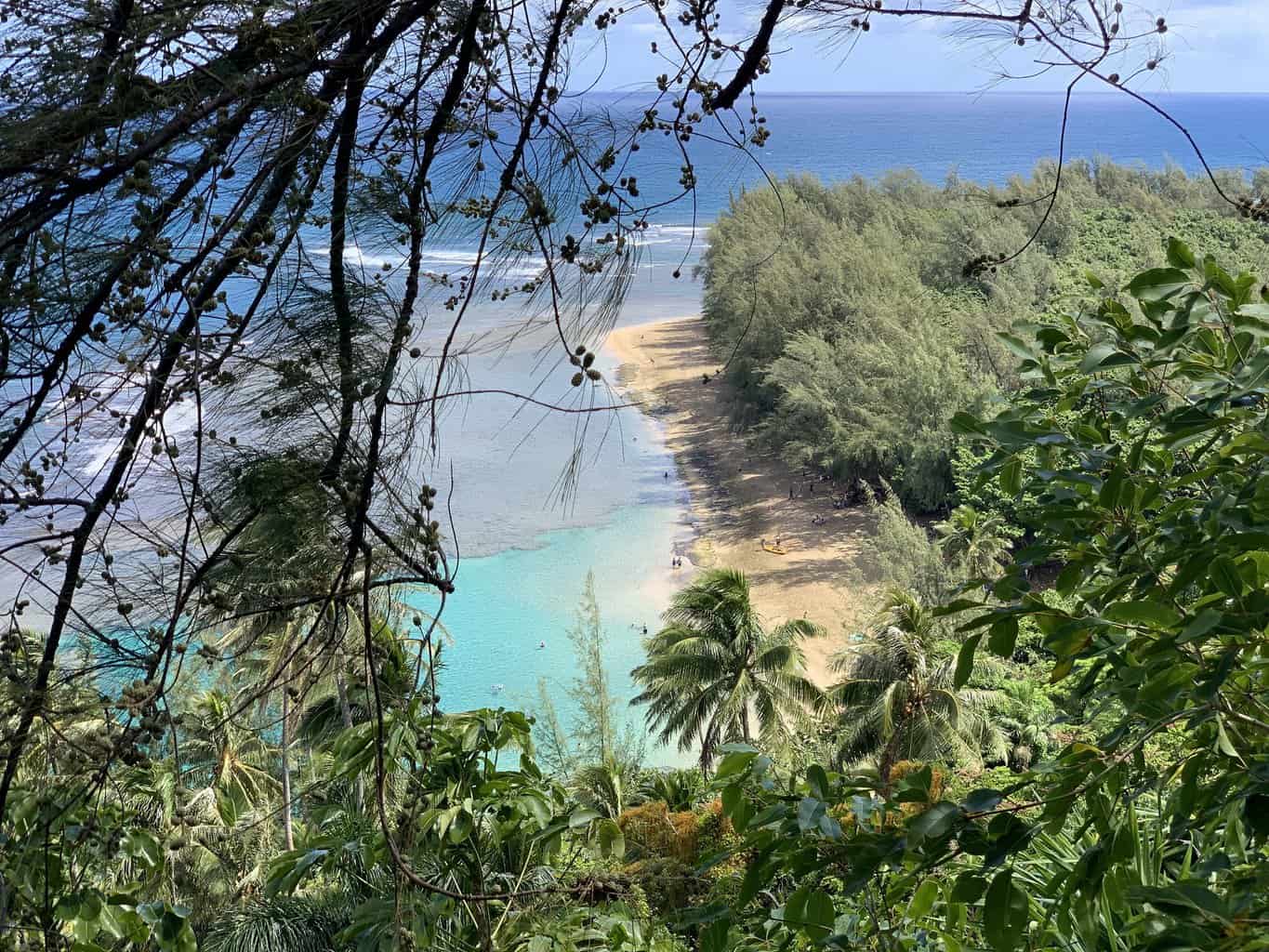
After about 20 minutes you will arrive at the top of the first section. There will be a strong gust of wind, then a dramatic view down the Na Pali Coast.
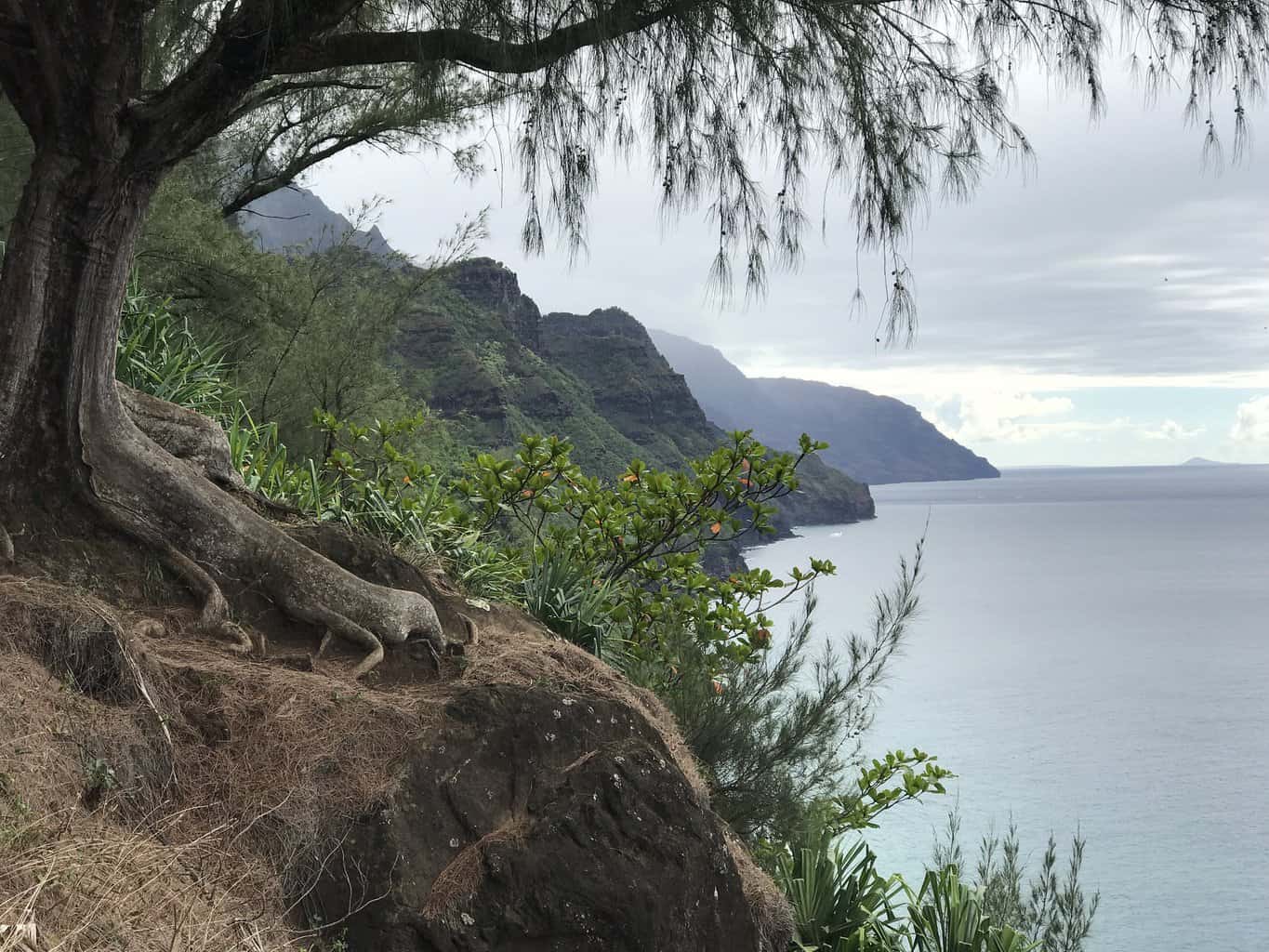
The trail continues up and down the Na Pali Coast through the Kalalau Valley.
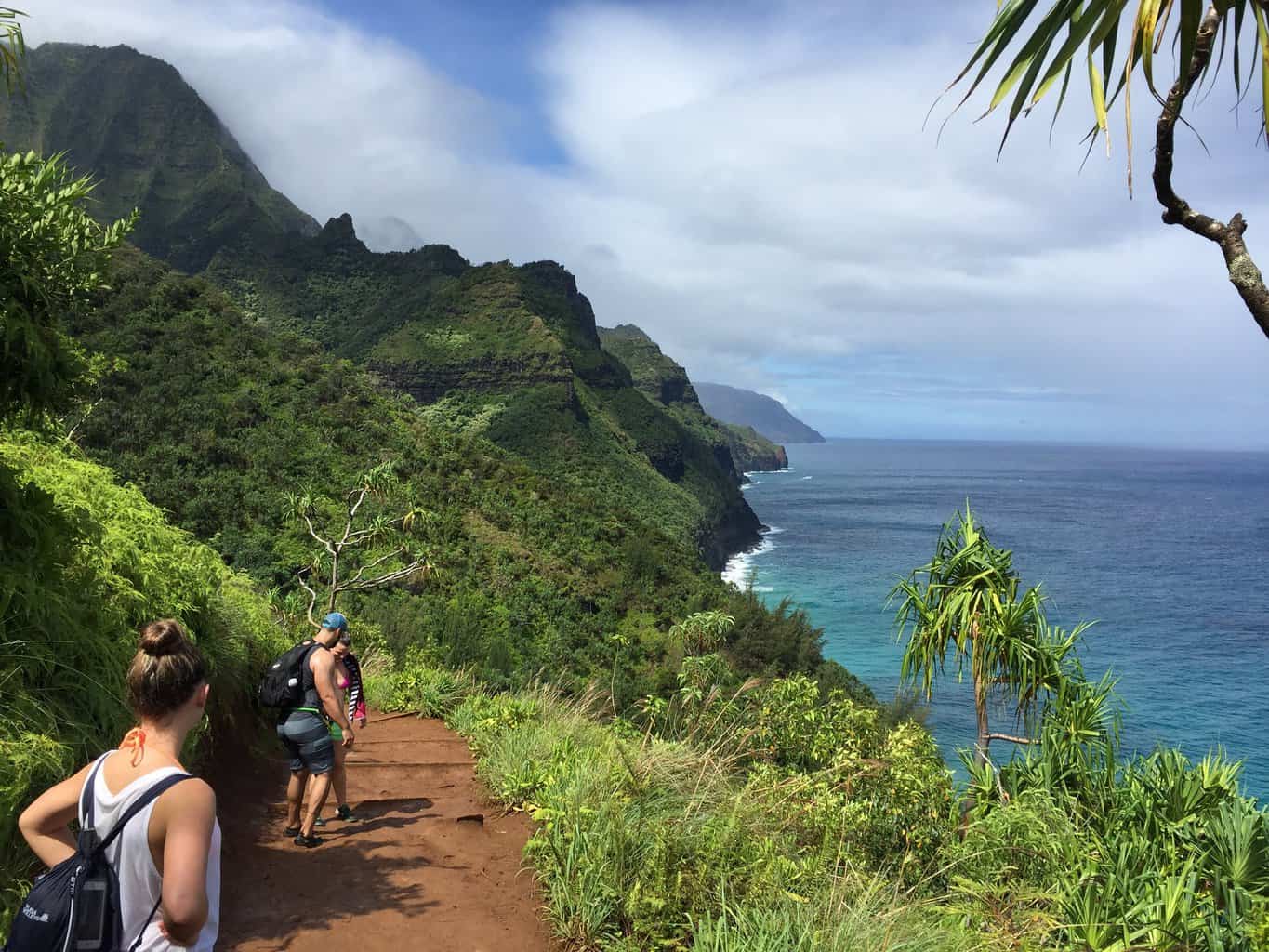
On the first part of the trail (first two miles) you will mostly see day-trippers who won’t be going beyond Hanakapiai Beach. After the Beach, you will see far fewer people on the Kalalau Trail.
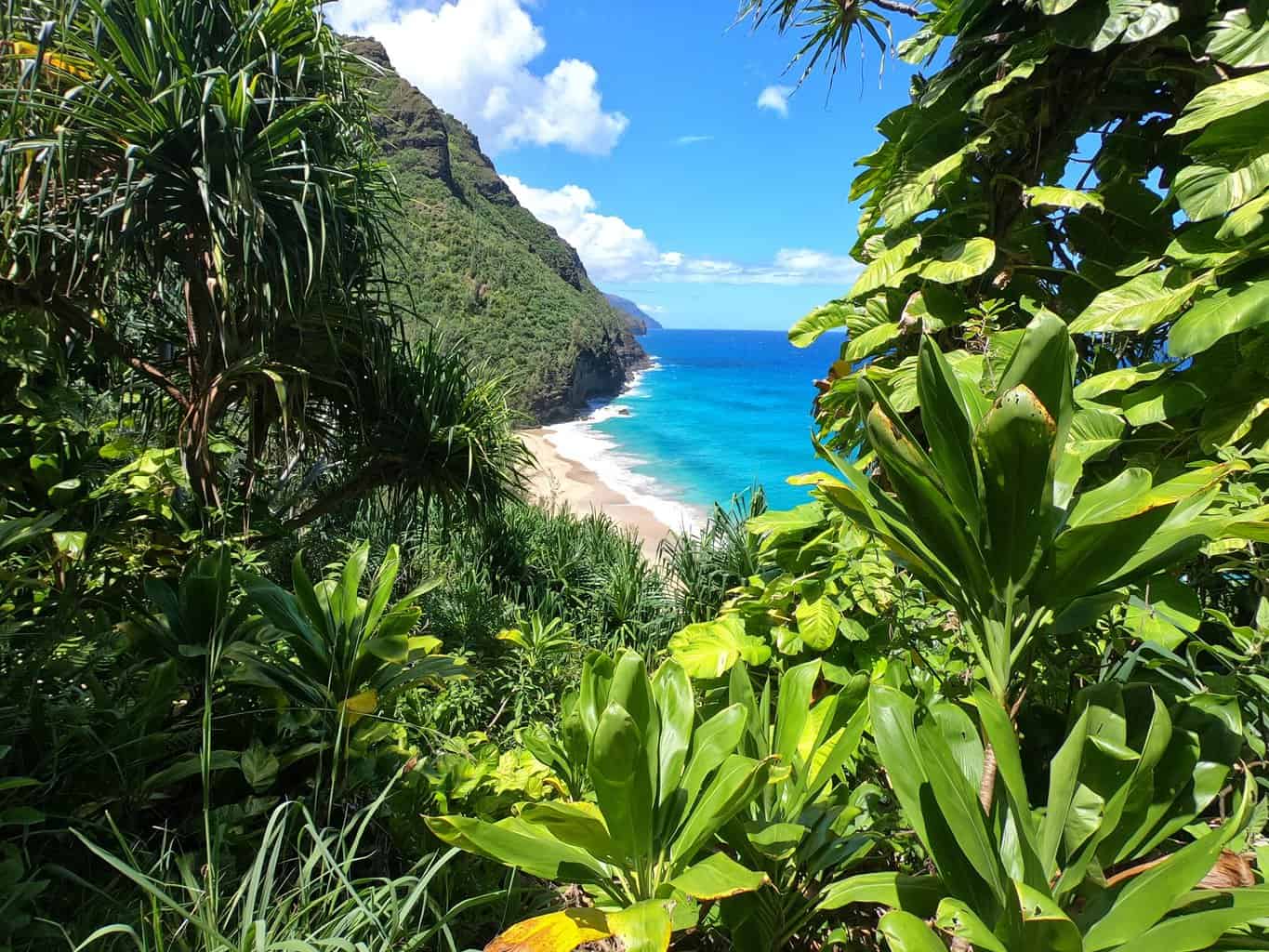
First glimpse of Hanakapiai Beach. The trail quickly descends as you approach the beach.
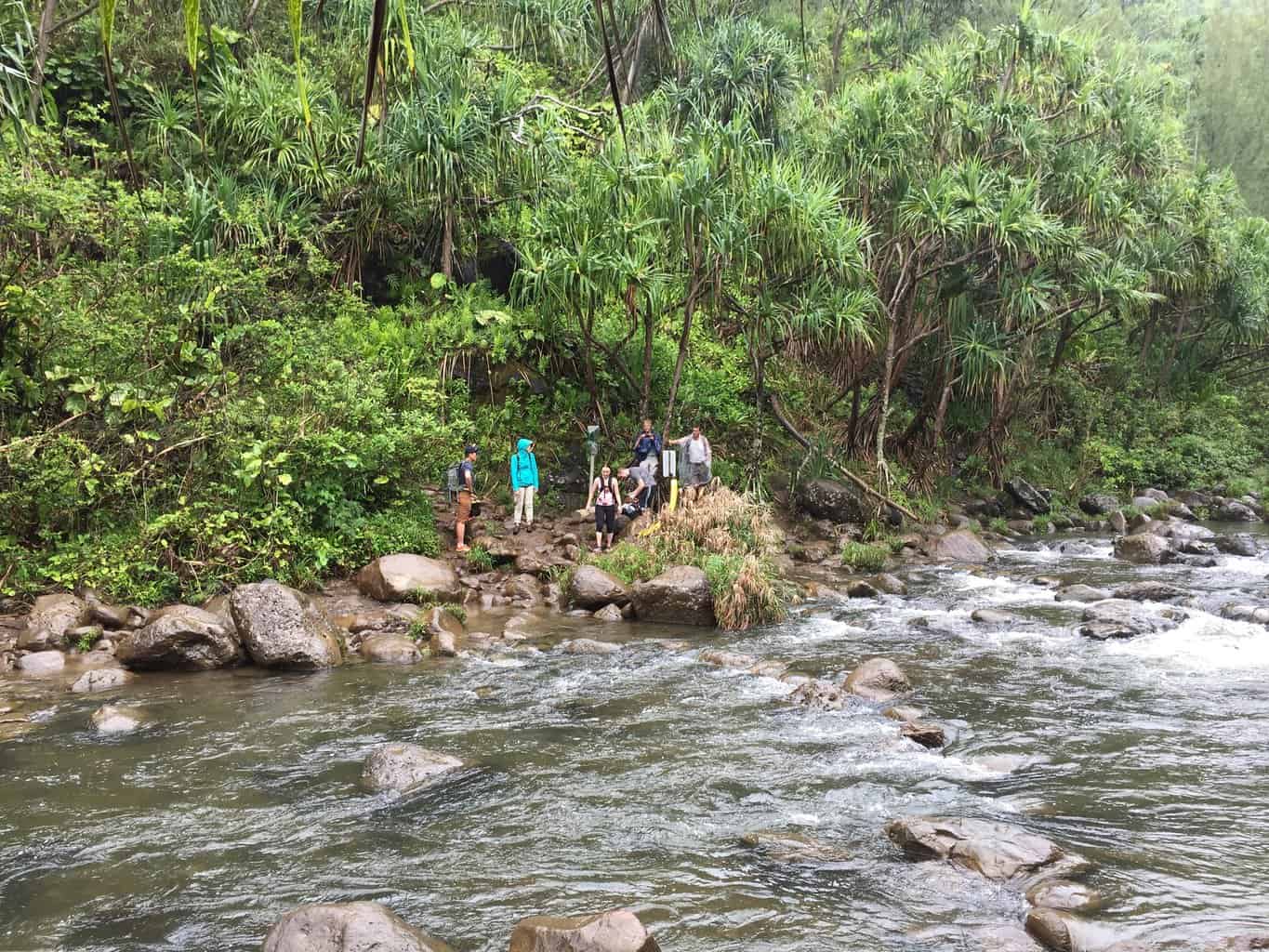
At Hanakapiai Stream, shown here under swollen conditions. Do not attempt to cross under dangerous conditions.
You could be swept violently downstream, banged against rocks, knocked unconscious and swept out to sea, never to be seen again. It has happened more than a few times. If in doubt, wait it out, or turn around.
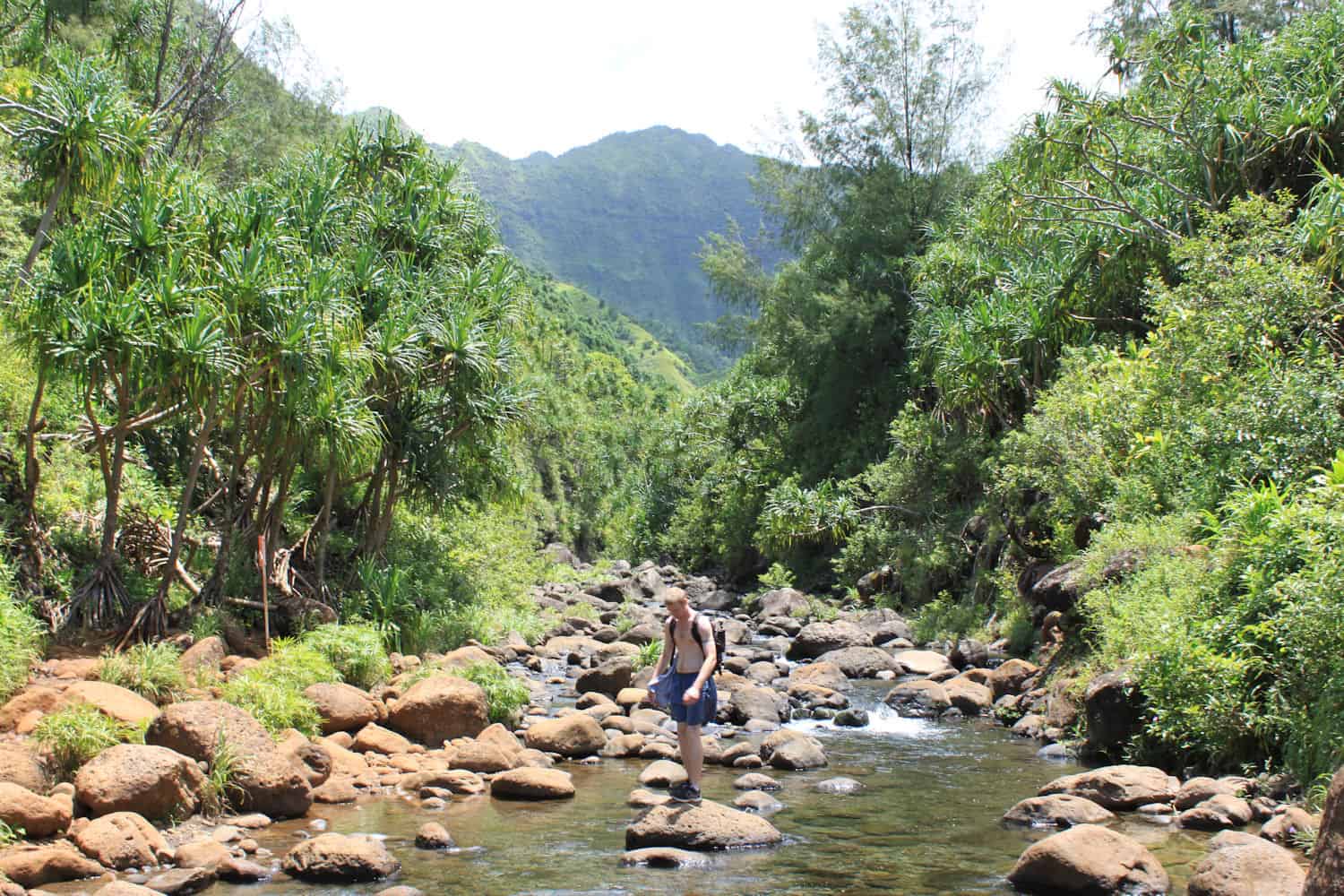
Hanakapiai Stream under normal conditions.
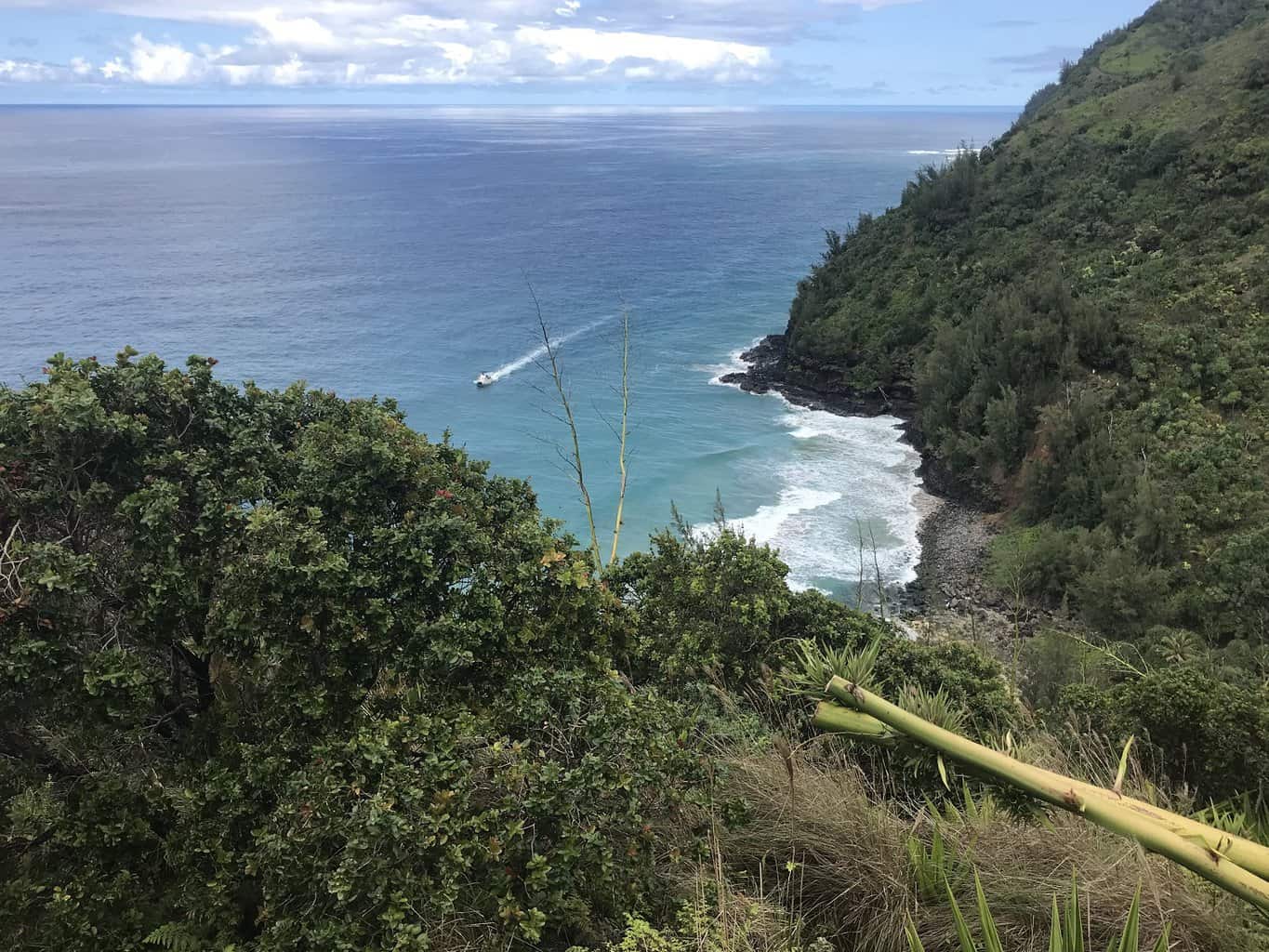
The trail rises quickly after Hanakapiai Beach (above photo), soon reaching the trail’s highest point at Space Rock at 3.25 miles from the start (1.25 miles from Hanakapiai Beach).
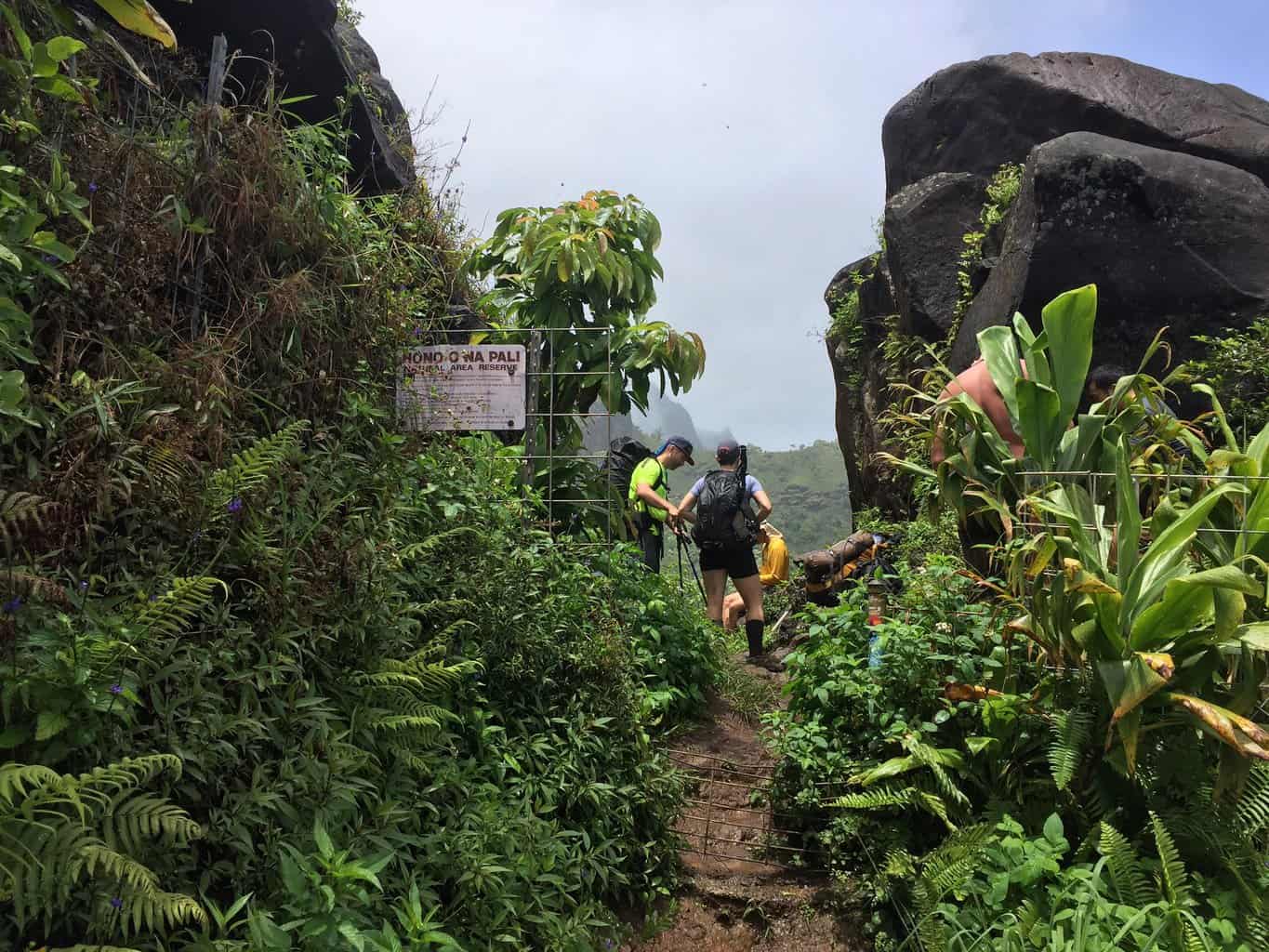
Above: Space Rock
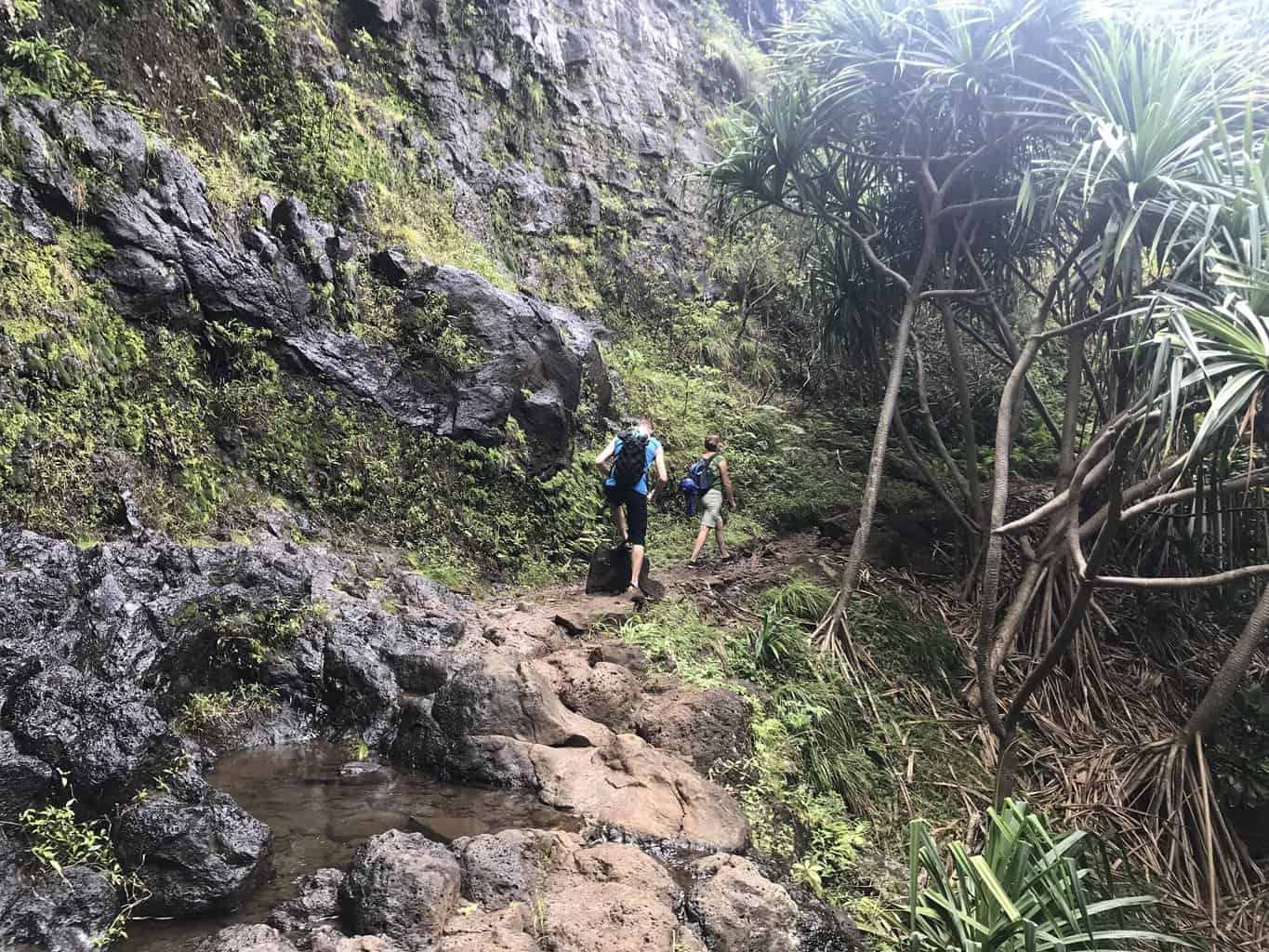
After Space Rock, the trail continues through several lush valleys before reaching the Hanakoa Stream and camping area at six miles. Many hikers will camp here for the night before making the final push through Crawler’s Ledge and the last of the trail.
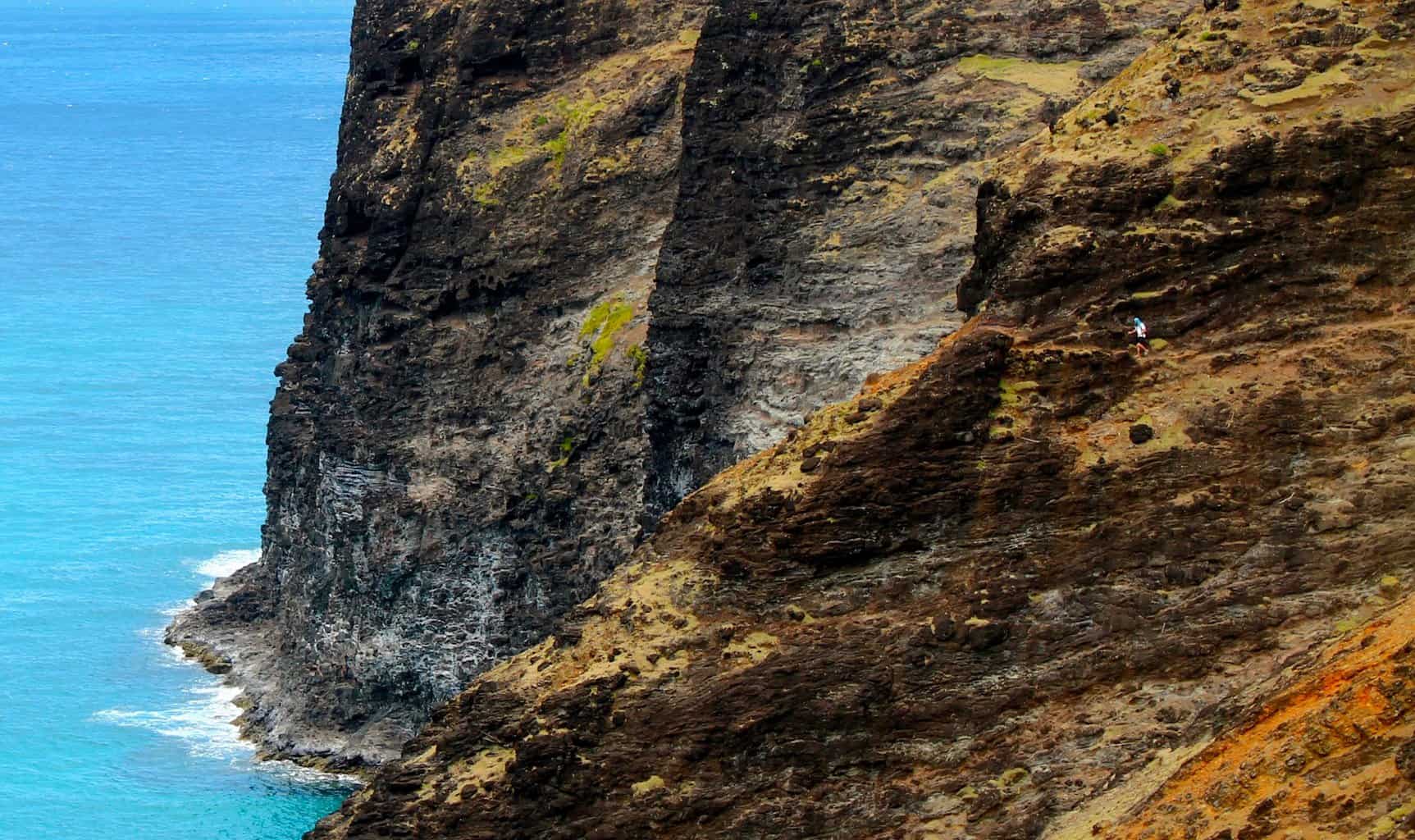
Crawler’s Ledge! Do you see the hiker?
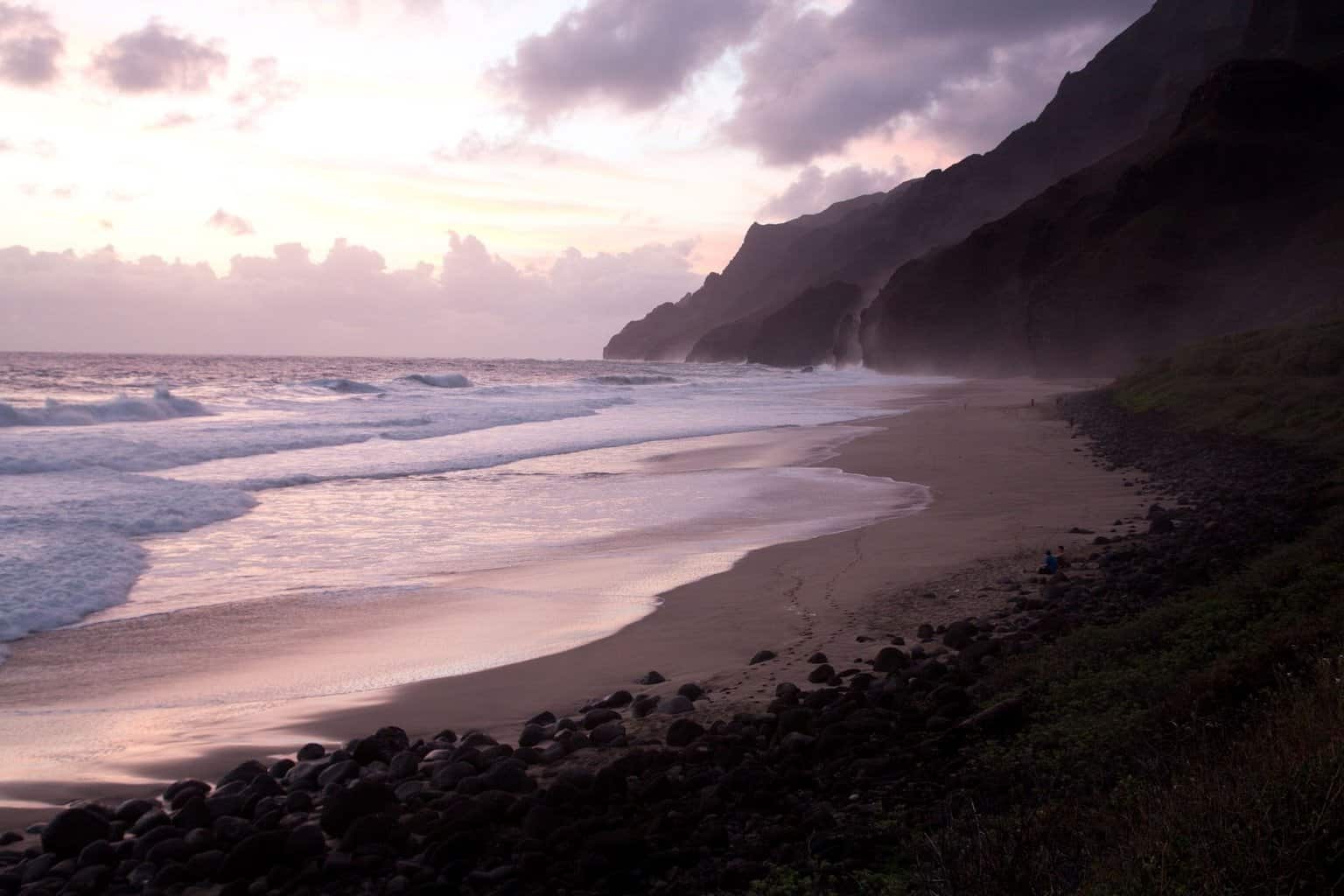
Peace and beauty at Kalalau Beach.

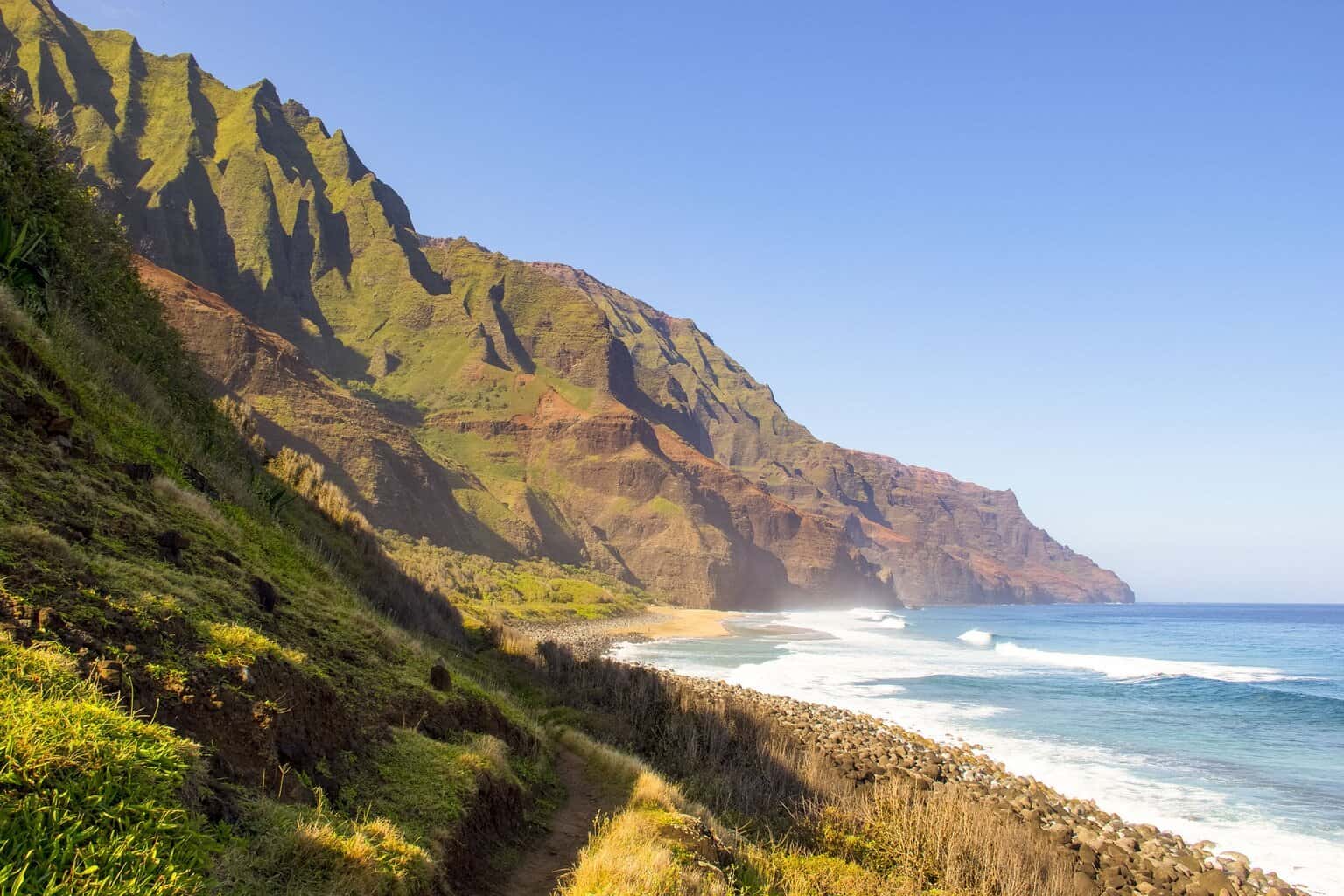
Leave a comment